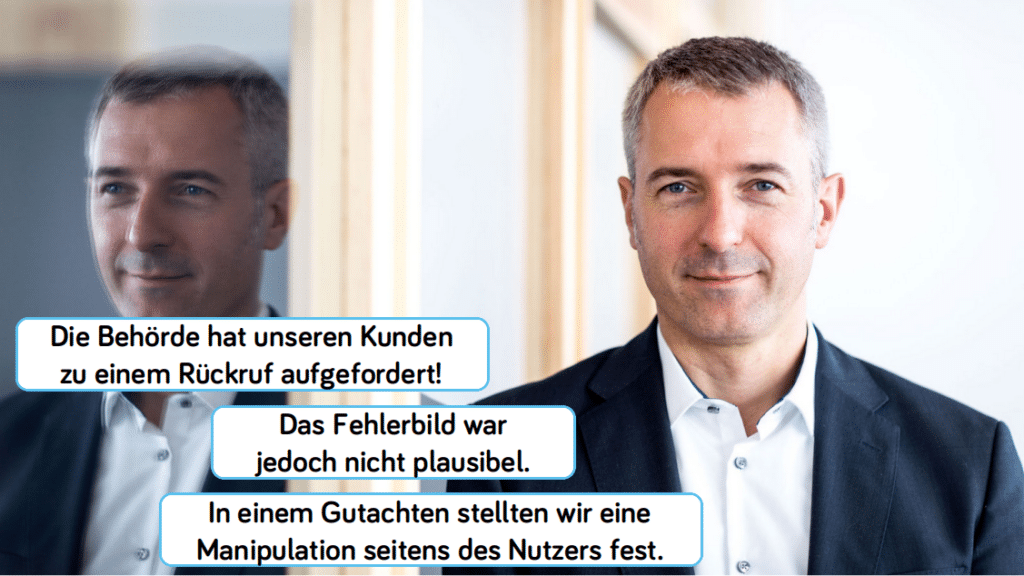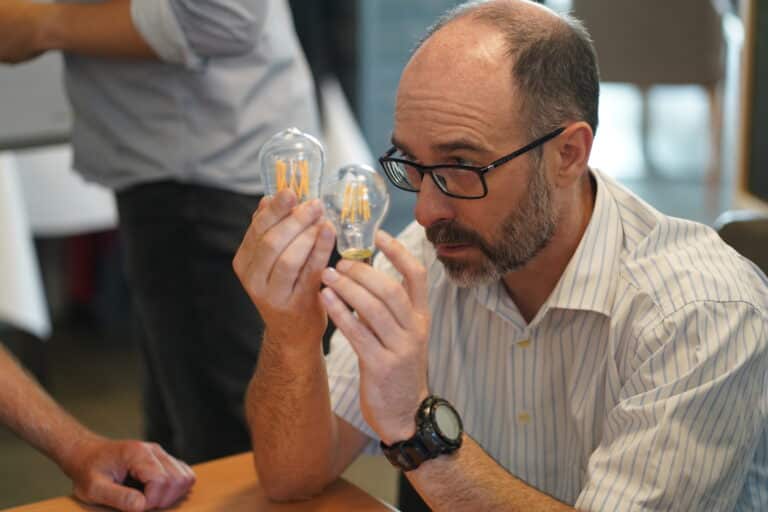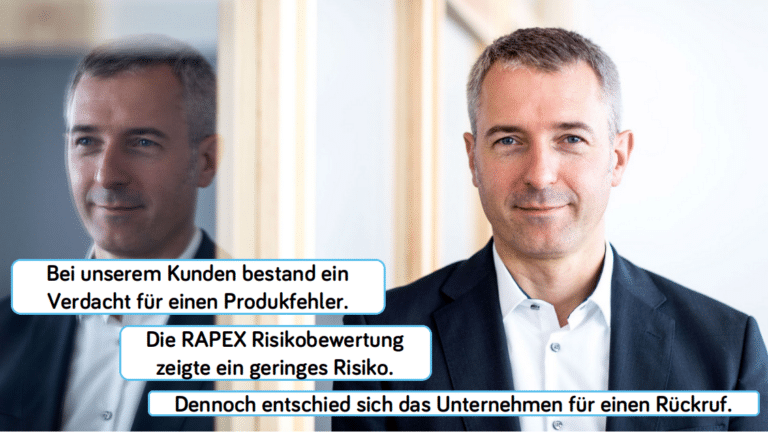Case study from practice – Manipulation: Why product defects do not always have to mean a recall
What happened?
We were approached by the lawyer of a company that markets technical products because there was apparently a defect in a product. The market surveillance authority was already involved and a recall was ordered.
There was a rightly identified risk.
However, the authority has not recognized something: The error occurred because the user manipulated something – and not because the manufacturer put it on the market that way.
The result?
Not only were we able to cause the recall to be averted, but we were able to make it more difficult in the future!
How could we help?
We were able to determine (once again through detective work) that this error did not match what was shipped or what was in the batch.
Through a systematic analysis, we identified the error and the cause of the error and were able to prove that a change had taken place on the part of the customer.
We put the facts down on paper in a professional and factual report and discussed the assessment with the authority.
In addition, we were able to make “misuse” more difficult after the fact by making appropriate recommendations to users whose underlying actions we now knew about.
We made recommendations to the manufacturer on how to make a clearer distinction between foreseeable and abusive use in future factual situations. Thus, it is better to take appropriate precautions in the product design or to minimize the user instructions (operating instructions) to the risk from the outset.
Our tips
- Have a sound evaluation done by experts (saves money in the end, as no useless recall)!
- Evaluate whether one could take measures with the product in the aftermath, which could prevent such a manipulation!
- And apply established methods such as an FMEA even for supposedly simple products.
Do you need experts to support you?
Go to the corresponding LinkedIn post here.






